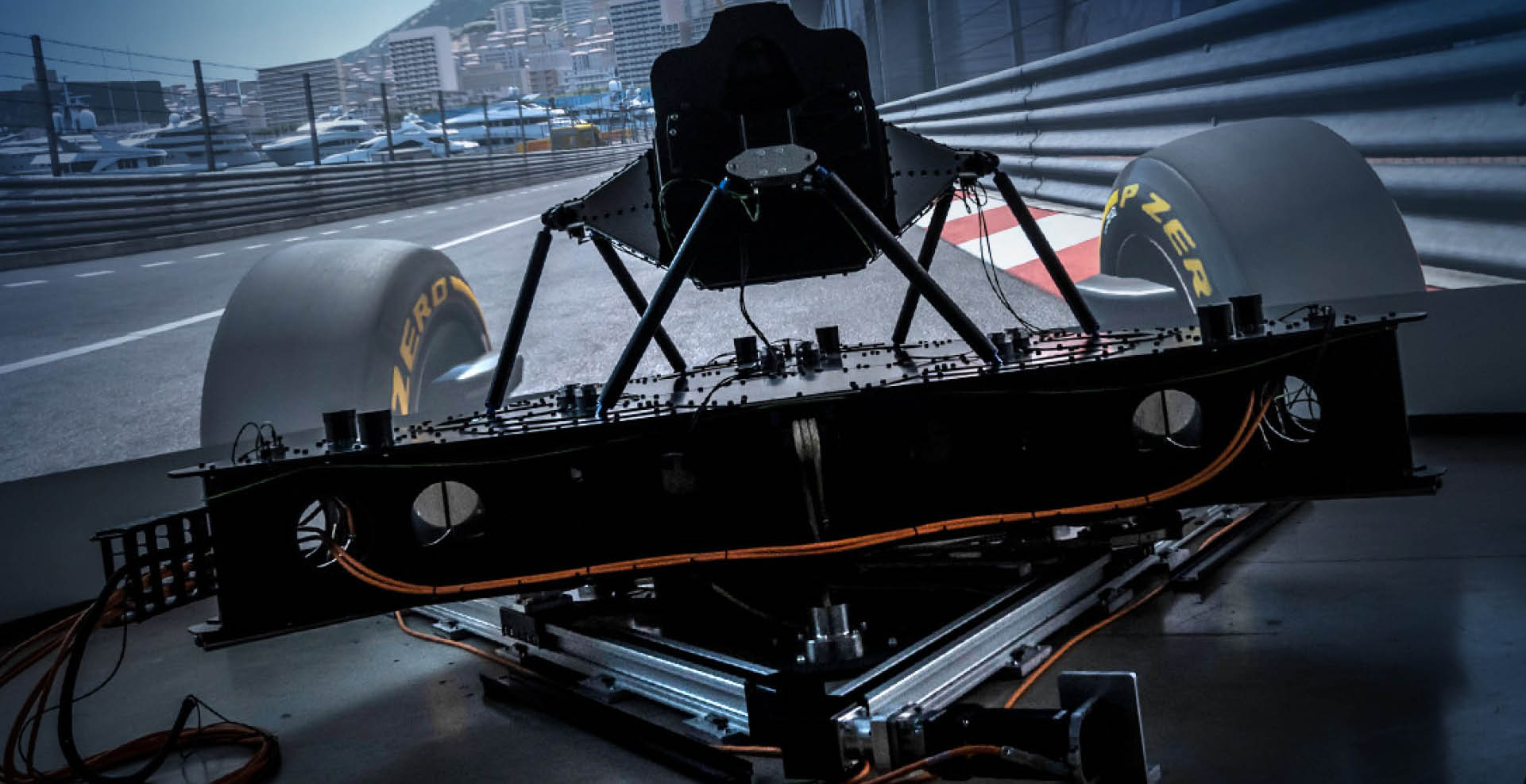Diablo integrates directly to the EtherCAT master that runs Dynisma’s simulations. This enables vehicle simulation data to flow through Diablo, directly to our analysis tool, Pi Toolbox

Overview
This is the second case study in our two-part, simulation series. This instalment covers the challenges and work we did to solve them with our client, Dynisma.
Driver-in-loop simulation is becoming an increasingly more important tool for both race teams and OEMs when it comes to developing their vehicles. Performance is not the only name of the game here, maximising all areas of vehicle behaviour is key to victories on the track and driveability for the road.
Dynisma came to us in search of a flexible solution that met the differing requirements of their customers, enabling them to log data from many different sources. Naturally, with our expertise in electronics, we were more than confident that we could step up to the challenge.
Challenges
Dynisma has a varied customer base, with clients in both the motorsport and automotive mobility sectors. Providing a solution that was usable for both types of customers was key. We needed a way to enable data capture for visualisation in Pi Toolbox, if we were to meet Dynisma’s objectives.
The OEM and motorsport sectors handle data in different ways. In motorsport, teams are focused on two things with driver-in-loop simulations: outright car performance and driver training. Due to time constraints (cars are often going through rapid development throughout the season), teams will often be carrying out the two tasks simultaneously.
OEM development programmes are typically much longer. Vehicles usually undergo 4 years’ worth of development, with performance only being one element of a larger programme. With that in mind, OEMs will be collecting and analysing a considerable amount of data.
The industry is constantly looking for ways to shorten and reduce the amount of time it takes to get a vehicle to market and a large part of that is the hundreds of miles being run on the road during testing. So, moving activity off the road is a must both in terms of sustainability and costs.
Solutions
Dynisma has a range of different customers with different vehicle models all running different systems. Using Diablo with Pi Toolbox allows us to support logging and analysis from a variety of different sources. With these two tools, we can work with all of the systems that customers want to use, including the real electronics that they test on the simulator.
In the motorsport field the departments working on car development are doing a variety of different tasks: event preparation work, car setup, tuning, driver training amongst others. Whereas, in the automotive sector, manufacturers are doing a wider range of tests. Within vehicle development, there are many additional areas that require testing: Human Factors testing including HMI (Human Machine Interface), autonomous driving, ADAS testing and much more. With the way the industry is moving (a higher focus on cost cutting and sustainability), automotive OEMs are realising the number of different tasks that can be carried out with driver-in-loop simulation, that has the potential to save vast amounts of time, money and producing results in a cleaner manner.
The average passenger vehicle accrues tens of thousands of testing miles during the development process. This is clearly not sustainable and is highly costly. Anything that manufacturers and also tier one suppliers can do to speed up the testing process, moving activity off the road will be beneficial for customers. This is why our software, Diablo and Pi Toolbox in particular, is extremely useful for the capture and analysis of data from simulations. With this ability, manufacturers can accurately replicate real world conditions within the virtual space, test and fully analyse all systems of their vehicles, without going near the road.
During the deployment of our software, Dynisma came across a throughput limitation when capturing fast data from a major single data source. Their DMG-1 simulator was pushing our tools in a novel way, highlighting limitations that hadn’t come up for us before. The bottleneck was promptly addressed by optimisations, gaining 10 times the headroom in terms of throughput in the process.
Diablo integrates directly to the EtherCAT master that runs Dynisma’s simulations. This enables vehicle simulation data to flow through Diablo, directly to our analysis tool, Pi Toolbox. Additionally, health data about the simulator itself can be acquired and analysed by the same system, providing a complete solution. Leveraging Diablo’s capabilities to talk directly to an EtherCAT master allowed us to integrate the advanced Dynisma simulators with Pi Toolbox in an innovative and very capable way.
Nikhil Garrett, Lead Simulator Development Engineer at Dynisma said:
“Max and his team were really helpful in supporting us, during the implementation we realised that Diablo needed a custom macro to support the way we manage lap time triggering. We communicated this back to Max and the team at Cosworth, who provided us with a solution the next day, that worked straight out of the box. So, for us, working with Cosworth has been a really positive experience.”